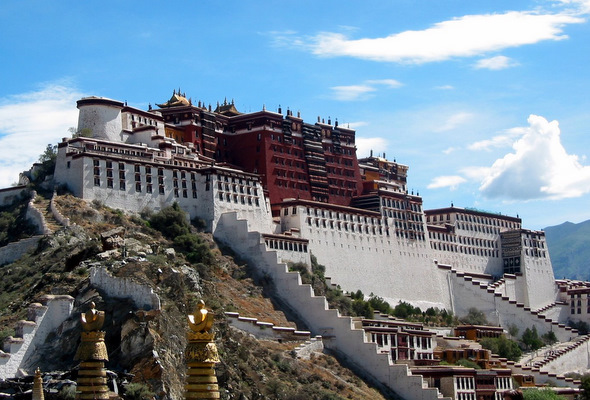Dragonguard of The Paths of Hesiesh Triumphant
In the mountains east of Goldenseal resides the remote Immaculate Xima Lo Monastery, a fortified complex jutting from the side of an extinct volcano that towers over the surrounding jungle. The warrior-monks and lay residents of the monastery are the Dragonguard of The Paths of Hesiesh Trimuphant, a martial order founded to guard several demesnes and manses deemed sacred to Hesiesh. Their warrior monks go to battle in flame patterned scale armor and wearing robes covered in Immaculate calligraphy. Many of their sets of armor are potent artifacts, their evocations providing protection from the harsh environment and enabling their wearers to move as fast as burning winds and cover their surroundings in burning ash or toxic gases. In addition to the Immaculate Dragon Styles, many warrior monks are proficient in Righteous Devil style. Their ascetic practices involve meditating in the extreme heat of the southern sun and the demesnes they guard, communing with the primal essence of fire. They have long been the protectors of the surrounding village states, defending them from bandits, wyld barbarians, and the raksha in return for supplies and obeisance to the Immaculate Texts. The Order also guards tribute caravans from satrapies and pilgrims visiting holy sites across the far Southwest. When the Scarlet Empress reigned, the Dragonguard were exemplars of Immaculate piety and loyalty to the Realm, but now, the Realm rots from within. With the neighboring satrapies recalling more and more of their garrisons and the Mouth of Peace nearing death, the Dragonguard of the Paths find themselves more and more isolated from their homeland. Once merely custodians, they find themselves as the de facto rulers of their region, Xima Lo Monastery being only true source of the Realm's authority for miles. Some monks are uncomfortable with this reality, and try to remain aloof from the secular world as they always have. A few see the writing on the walls, that the Realm will soon descend into chaos and the faithful will have to forge their own paths in a new age of turmoil. Slowly but surely, heresies are beginning to take root in the Dragonguard without their conscious notice. Hesiesh, their patron, is being revered with heterodox frequency and intensity, as are Pasiap and Sextes Jylis. The monks have increased the tithes they ask of the locals and caravans, in case of civil war on the Blessed Isle cutting off their funding(or so they tell themselves). The local prayer calendar is being altered to favor spirits the Dragonguard have pacted with to defend caravans and towns. Their sacred calligraphy, once done in moderation, is beginning to consume more and more of their daily lives, some monks wearing clothing with every inch covered by devotional script. Legate-Abbot Mirthful Grin is developing a new martial arts style from visions he believes come from the Dragons themselves, naming his creation the Burning Veins Style, for it evokes the devastation of Hesiesh and Pasiap's primordial volcanism through overwhelming rushes and explosive haymakers.


